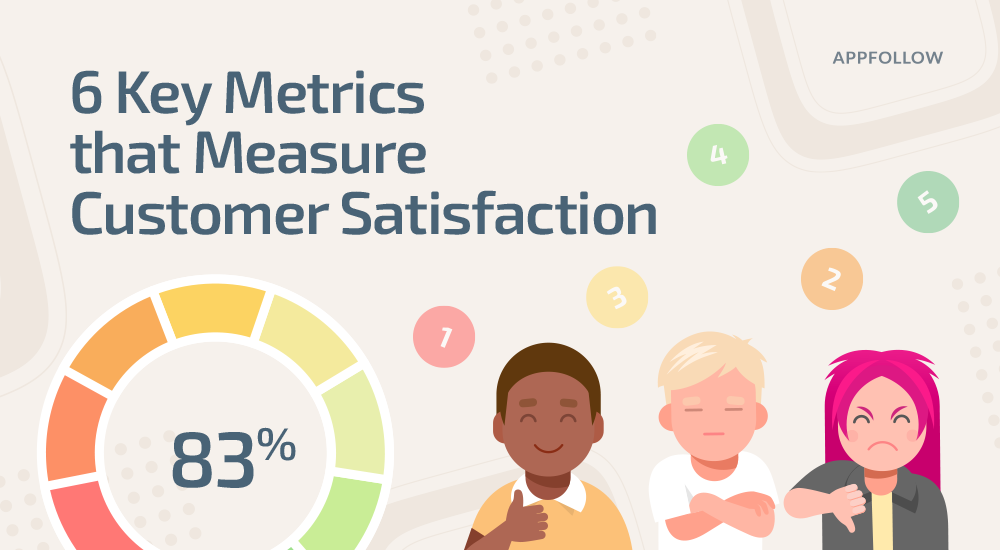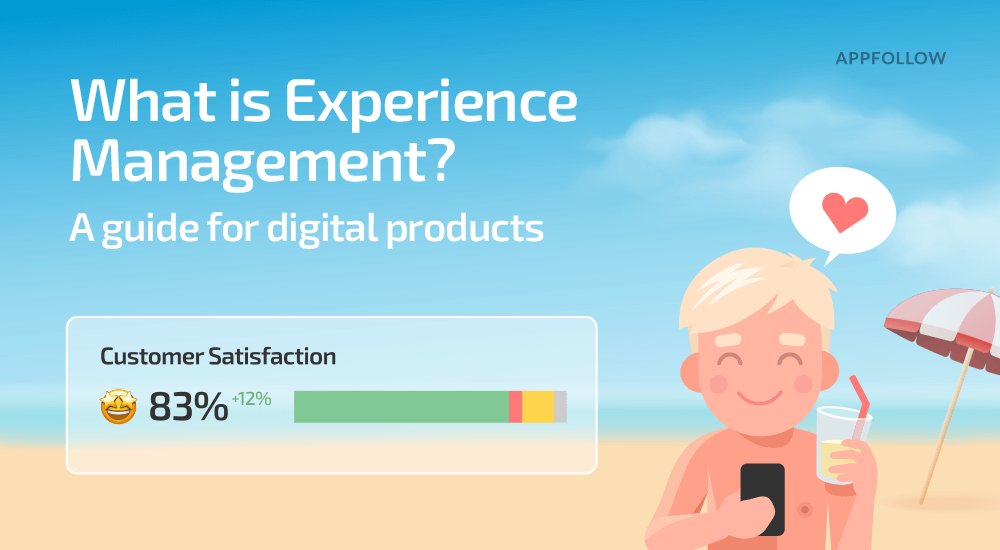6 Key Metrics that Measure Customer Satisfaction

Table of Content:
The app marketplace keeps product managers and customer support teams on their toes to ensure that customers enjoy excellent experiences. After all, delivering consistent value and satisfaction in a market where the customer is king is the only way to stand out, reduce user churn and ensure consistent bottom-line growth.
Satisfied customers don't leave your brand for competitors. Instead, they act like loyal advocates, with nearly 69% helping to acquire new customers through positive recommendations and 50% returning as repeat customers.
This article highlights the importance of tracking customer satisfaction and guides with some key metrics you can use to measure it. Without further ado, let's begin.
How to define customer satisfaction
Any individual interacts with a service or product to fulfil certain expectations. Customer satisfaction seeks to measure how successfully a brand caters to those expectations.
Customer experience is often confused with being synonymous to customer satisfaction. However, customer experience is only a catalyst in influencing a customer's satisfaction levels which often depends on several aspects, experience being only one of them!
Why does customer satisfaction matter?
Accurate understanding of customer satisfaction levels matters as it:
- Guides more meaningful marketing strategies by understanding the impact on customers.
- Helps product understand responses to new releases and features.
- Enables the support team to find areas for improvement in their workflows.
- Enables you to stand out from the competition, becoming a key USP.
- Reduces customer churn and raises customer lifetime value.
- Increases customer loyalty and generates referrals.
How do you measure customer satisfaction?
You can measure customer satisfaction using several metrics. Popular customer satisfaction metrics include
1. Net Promoter Score (NPS)
NPS calculates users' willingness to recommend or promote your offering to their network. It is measured using user surveys to isolate how likely is the user to recommend your app to others.
How to calculate NPS?
You can calculate NPS based on the survey responses by classifying user scores into three groups:

- Detractors, including the count of users who rate satisfaction between 0-6.This group is not loyal and may indulge in negative word-of-mouth publicity of your brand.
- Passives, including the count of users who rate satisfaction as 7-8. These may not discourage other users from trying your offering but won't even recommend you.
- Promoters, including the count of users who rate 9-10.
They are your most loyal customers who you can count on to promote your brand.
Using this data, you can calculate NPS using the formula:


The formula returns a number between -100 and +100, indicating the user perception of your app.It's important to note that the NPS doesn’t explain the reason influencing the perception.
2. Customer Satisfaction Score (CSAT)
- CSAT is a percentage measure of how well your app caters to users' expectations and how happy they are using it. It's primarily a product or service focused metric that captures the relationship between the user and the product or service without considering what that individual does before or after usage.
- How do you calculate CSAT?
- You can measure CSAT through surveys using a rating scale, requesting surveyors to express their satisfaction levels for a specific situational question. That question can be about the quality of delivery, availability or quality of customer support, the overall experience, etc.
- You can use a scale between 1-10 or 1-5 to measure. In either case, the idea is to calculate the proportion of happy customers as per the scale chosen. You may consider the below as an indication of happy:

- It's important to note that CSAT calculation may lead to a response bias if the data is skewed.
3. Average Rating
Customers leave ratings for an app to reflect their satisfaction levels. The Average Rating metric aggregates all these individual customer ratings over a while and returns an indication of customer satisfaction. Average Rating is considered by new potential app users before they download or spend money on an app.
A higher rating indicates higher satisfaction and vice versa. However, if the number of ratings is few and skewed, the metric can be biased and adversely impact your app’s progress. Hence, investing in ensuring it’s a healthy number is important.
4. User Reviews
These include words of satisfaction or dissatisfaction directly documented by a customer and are critical in ascertaining the context of why your average rating is as so. Reviews are crucial to user acquisition because nearly90% of customers today refer to online reviews before engaging with a brand. In fact, they trust reviews as much as they would trust personal recommendations.
Reviews play a significant role in driving new purchases. Often, ambitious companies analyze their competitor's reviews and address their weaknesses to carve out their uniqueness in the market.
How do you make sense of user reviews?
Users leave their reviews across platforms such as Play Store and the App Store. Making proper sense of them requires aggregating them from all the platforms to systematically discover insights and address them for improving retention, reputation and revenue.
Simultaneously, it's essential to respond to user reviews to make sure customers feel heard and elevate their experience. Solutions such as AppFollow enables you to monitor, analyze, and easily respond to user reviews from a unified platform.

It also helps you understand the impact replying to reviews have had on your average rating and CSAT (both overall and per agent) — measured by the percentage of reviews with positive reply effect (the reviews with the updated rating to more stars) from the total number of reviews with reply effect.
5. Customer Churn Rate (CCR)
Customer Churn Rate captures the proportion of customers that abandon your product or service before transacting entirely. The abandonment may occur during the initial phase itself or in the middle of using the app and it can indicate low levels of satisfaction of your user base.
How do you calculate CCR?
You can calculate CCR by isolating the proportion of customers at the end of the period from those at the beginning.

To find out the number of customers you’ve lost: Number of customers at the beginning of the period minus number of customers at the end of the period.
6. Customer Effort Score (CES)
CES helps ascertain the ease a customer feels when interacting with your support team or app. It may be the effort needed to access the product or obtain the desired result. Naturally, greater ease in both situations implies great satisfaction and increased loyalty. The idea behind measuring CES is to streamline the customer experience, proactively discover pain points, and address them before customers leave.

How to calculate CES?
You can calculate CES using customer feedback surveys, requesting them to rate their ease or difficulty levels. The scale may range from very difficult to very easy for a particular situation. The proportion of easy and very easy will indicate the CES.
To summarize
Customer satisfaction metrics are a good measure of business success across the app user lifecycle. Minutely tracking the metrics mentioned in the article and taking proactive steps to improve them ensures consistent bottom line growth.






